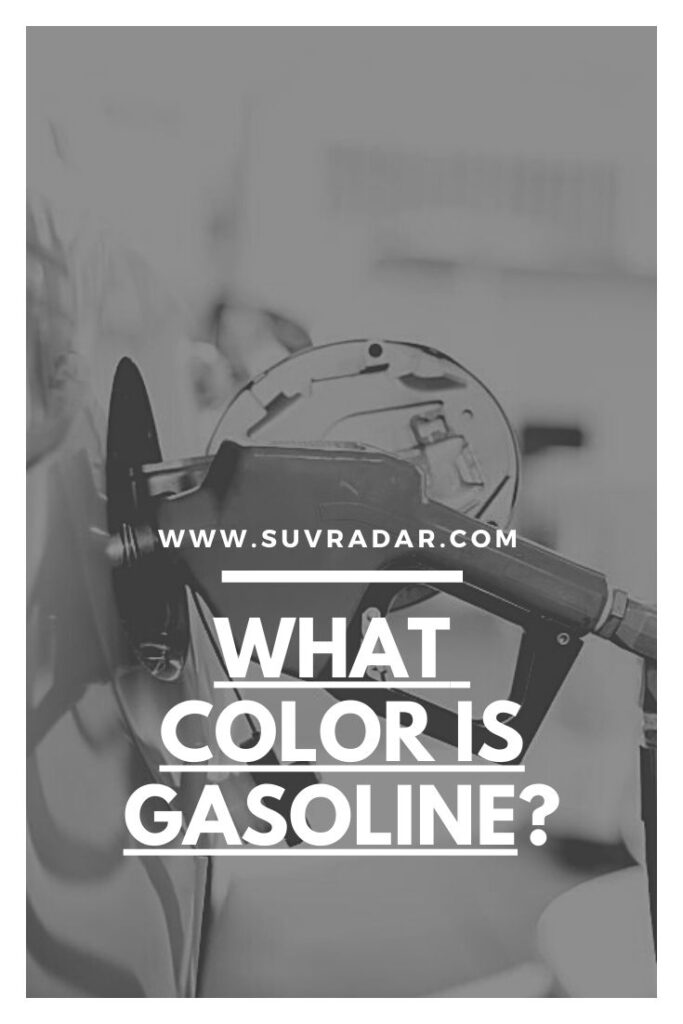Every day, new car designs and car improvements make headlines, but it seems like people don’t actually care to know about the fuels we use to power them.
Gasoline is one of the major power sources for several cars. It is referred to as gas or petrol. It is a highly volatile and flammable liquid derived from petroleum that is used to fuel the internal combustion that occurs in vehicle engines and is responsible for making the car move from one location to another.

How is Gasoline Made?
Gasoline wasn’t always the favorite fuel choice at the beginning of vehicle introduction and usage. It, however, proved its worth and became preferred to other fuel alternatives because of its high energy of combustion and its capacity to mix readily with air in a carburetor.
The first process in the production of gasoline is distillation. Distillation involves separating the volatile and more valuable fractions of crude oil.
The process that follows is called cracking, and it is a procedure in which large molecules of crude oil are split into smaller ones to increase the yield of gasoline.
Thermal cracking, which involves the employment of heat and high-pressure systems, was first used before it was later replaced with catalytic cracking, which involves the application of catalysts to speed up chemical reactions and produce more gasoline.
Other methods such as polymerization, alkylation, reforming, and isomerization were employed later to improve gasoline quality and increase supply.
Petroleum refineries mostly produce gasoline blending components, which are called gasoline blendstocks.
These blendstocks are blended with liquids such as finished gasoline and fuel ethanol to make finished motor gasoline in different grades and formulations.
Some companies even add detergents and other additives to make the gasoline last longer and prevent deposition on critical engine parts of the vehicles they fuel.
Blending terminals are more numerous and common than petroleum refineries. They are the ones who own equipment for filling tanker trucks that transport finished motor gasoline to retail gas stations.
The characteristics of the final gasoline product depend largely on the type of crude oil used to produce it and the setup of the refinery that produces it.
The Grades of Gasoline
There are three different grades of gasoline sold at gas refueling stations. All these indicate the octane rating of the gas, and this octane rating determines the ability of the gasoline to resist engine knocking. The higher the octane number, the more stable the fuel.
The first grade is regular. This is the lowest-octane fuel, with a general octane number of 87.
The second grade is in the Mid-range. It is a middle-range octane fuel and generally has an octane range between 89 and 90.
The third grade is the premium gasoline grade. This grade has the highest octane rating, with a range of 91 to 94.
Apart from the Octane rating, the price also differentiates these gasoline grades from one another. The grade with the lowest octane rating is usually the least expensive, while the gasoline with the highest octane rating is usually the most expensive.
What Color is Gasoline?
Gasoline in its pure form is colorless. When placed in a white container, however, it appears to have a slight amber color at the gas station and in the container. The tint is a result of the additives that were combined with the gasoline at the refinery.
Gasoline color can vary depending on the location, the type of crude oil, and the refining methods used, but it is mainly a pale yellow or amber color.
Oil, when compared to gasoline, has a different color. Its colors range from black to dark brown, or even green. Other refined oil products, such as engine oil, can range in color from amber to light brown.
Both gasoline and oil can have various additives that may alter their colors slightly, but in their pure form, gasoline is transparent or slightly yellowish, while oil can have a darker or opaque color.
Note that oil refineries and fuel manufacturers may add specific dyes or markers to gasoline to distinguish premium gasoline from regular or diesel fuel.
These dyes are, however, often added in minute quantities, and they do not change the overall color or affect the performance of the fuel.
Different brands or suppliers of gasoline may have slightly different gasoline colors. This is perfectly fine as long as the gasoline meets the required specifications, maintains a nice yellowish tint, and does not show any signs of degradation.
Can Gasoline Go Bad?
When gasoline degrades, it is referred to as bad gasoline. Gasoline goes bad when left alone for a long period. It begins to have a darker, cloudier color coupled with a varnish-like or gel-like consistency.
Its specific color and appearance can vary depending on several factors, such as the type of additives used, the conditions it was stored in, and how long it has been stored.
Yellow gasoline is a necessary indicator of bad gasoline. As mentioned earlier, gasoline can be slightly yellowish. A slight yellowish color can even be an indicator of premium-grade gasoline.
In addition to color and appearance changes, bad gasoline may also have a stronger, more off-putting smell.
Bad gasoline can clog fuel filters, injectors, and carburetors, leading to poor engine performance and even fuel system damage.
If you suspect that gasoline has gone bad, the best thing is to avoid using it in your vehicle and seek proper disposal methods.
To avoid ending up with bad gasoline, the best thing is to ensure that you use it within a short period to prevent it from degrading.
If you do decide to store your fuel for a while, make sure you purchase it from a reputable gas station and store it in approved containers to maintain its quality.
Closing the curtain
Gasoline is a major requirement for moving vehicles from one place to another.
It is a transparent (colorless) or slightly yellowish liquid that is highly flammable, volatile, non-viscous, and has a very distinct odor that many people can recognize.
The freshness, quality, and smell of gasoline, which can be known through its color and smell, are very important factors to consider before it is used in a vehicle or for any other equipment.




